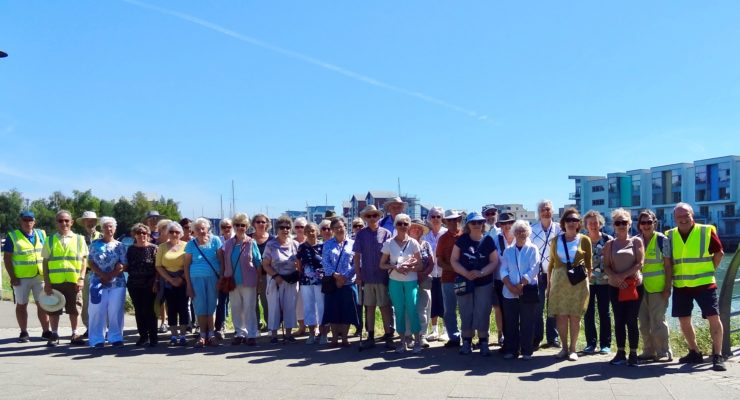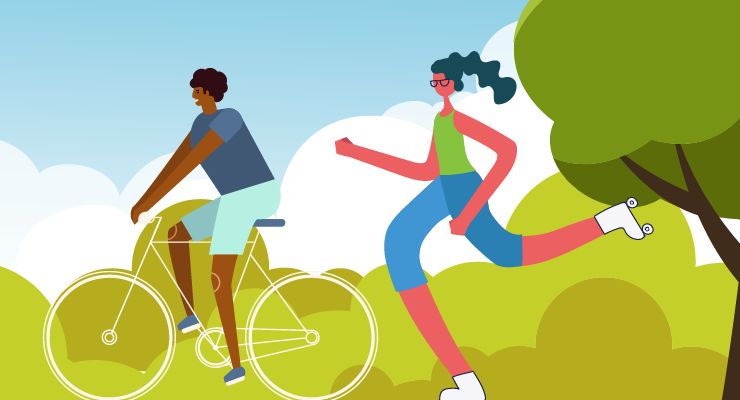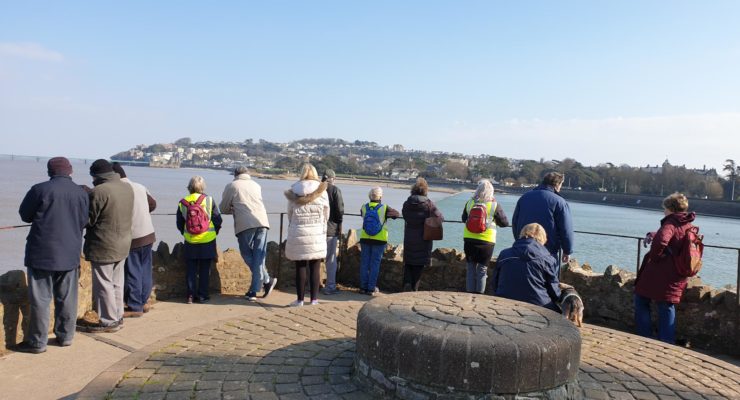The benefits of physical activity
Physical activity the miracle cure!
Physical activity can reduce your risk of major illnesses, such as coronary heart disease, stroke, type 2 diabetes and cancer and lower your risk of early death by up to 30%.
Check physical activity guidelines for:
- children (under 5 years)
- children and young people (5 to 18 years)
- disabled children and disabled young people
- exercise (adults 19 to 64 years)
- disabled adults
- pregnancy and after childbirth
- older adults (65 years and over)
Physical activity is the miracle cure we’ve always had, but for too long we’ve neglected to take our recommended dose. Our health is now suffering as a consequence.
Whatever your age, there’s strong scientific evidence that being physically active can help you lead a healthier and happier life.
People who exercise regularly have a lower risk of developing many long-term (chronic) conditions, such as heart disease, type 2 diabetes, stroke, and some cancers.
Research shows that physical activity can also boost self-esteem, mood, sleep quality and energy, as well as reducing your risk of stress, clinical depression, dementia and Alzheimer’s disease.
Health benefits
Given the overwhelming evidence, it seems obvious that we should all be physically active. It’s essential if you want to live a healthy and fulfilling life into old age.
It’s medically proven that people who do regular physical activity have lower risk of:
- coronary heart disease and stroke
- type 2 diabetes
- bowel cancer
- breast cancer in women
- early death
- osteoarthritis
- hip fracture
- falls (among older adults)
- depression
- dementia
What counts?
To stay healthy, the UK Chief Medical Officers’ Physical Activity Guidelines, on GOV.UK, state that adults should try to be active every day and aim to do at least 150 minutes of physical activity over a week, through a variety of activities.
Adults should also do activities to develop or maintain strength in the major muscle groups. Muscle strengthening activities should be done at least 2 days a week, but any strengthening activity is better than none.
The guidelines also highlight the additional benefit of balance and flexibility exercises for older adults. Exercises that improve leg strength, balance and coordination can help people maintain and improve muscle strength and avoid falls as they age. Improving flexibility can improve posture, reduce aches and pains, lower risk of injury, and help with continuing to carry out everyday tasks.
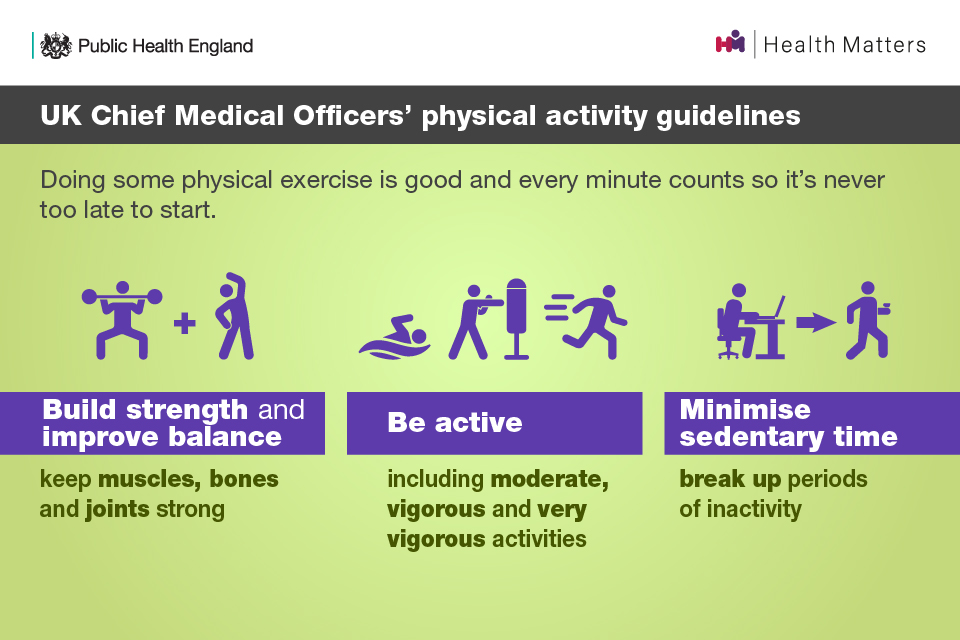
Muscle and bone strengthening and balance activities are important across the life course for different reasons:
- to develop strength and build healthy bones during childhood and young adulthood
- to maintain strength in adulthood
- to delay the natural decline in muscle mass and bone density that occurs from around 50 years of age, maintaining function in later life
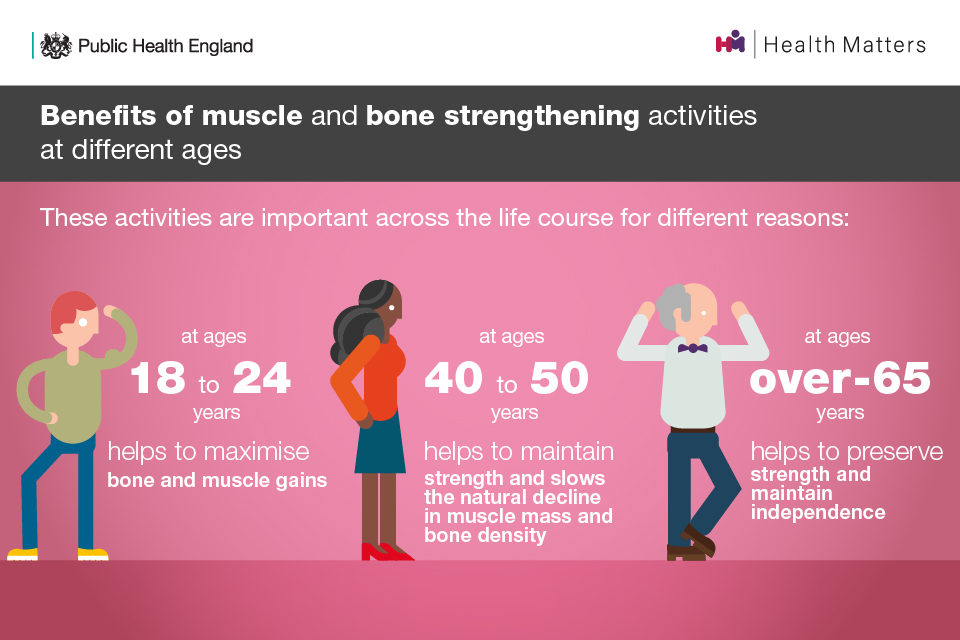
For most people, the easiest way to get moving is to make activity part of everyday life, like walking for health or cycling instead of using the car to get around. However, the more you do, the better, and taking part in activities such as sports and exercise will make you even healthier.
For any type of activity to benefit your health, you need to be moving quick enough to raise your heart rate, breathe faster and feel warmer. This level of effort is called moderate intensity activity. If you’re working at a moderate intensity you should still be able to talk but you won’t be able to sing the words to a song.
An activity where you have to work even harder is called vigorous intensity activity. There is substantial evidence that vigorous activity can bring health benefits over and above that of moderate activity. You can tell when it’s vigorous activity because you’re breathing hard and fast, and your heart rate has gone up quite a bit. If you’re working at this level, you won’t be able to say more than a few words without pausing for a breath.
A modern problem
People are less active nowadays, partly because technology has made our lives easier. We drive cars or take public transport. Machines wash our clothes. We entertain ourselves in front of a TV or computer screen. Fewer people are doing manual work, and most of us have jobs that involve little physical effort. Work, household chores, shopping and other necessary activities are far less demanding than for previous generations.
We move around less and burn off less energy than people used to. Research suggests that many adults spend more than 7 hours a day sitting down, at work, on transport or in their leisure time. People aged over 65 spend 10 hours or more each day sitting or lying down, making them the most sedentary age group.
Sedentary lifestyles
Inactivity is described by the Department of Health and Social Care as a “silent killer”. Evidence is emerging that sedentary behaviour, such as sitting or lying down for long periods, is bad for your health.
Not only should you try to raise your activity levels, but you should also reduce the amount of time you and your family spend sitting down.
Common examples of sedentary behaviour include watching TV, using a computer, using the car for short journeys and sitting down to read, talk or listen to music. This type of behaviour is thought to increase your risk of developing many chronic diseases, such as heart disease, stroke and type 2 diabetes, as well as weight gain and obesity.
Crucially, you can hit your weekly activity target but still be at risk of ill health if you spend the rest of the time sitting or lying down.

